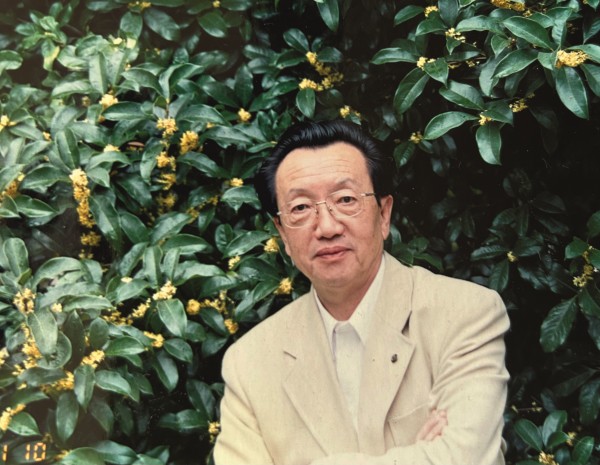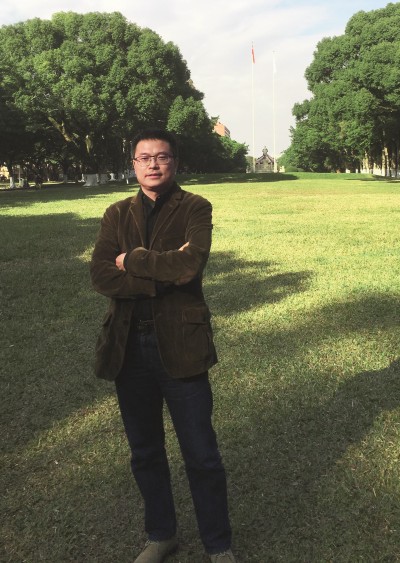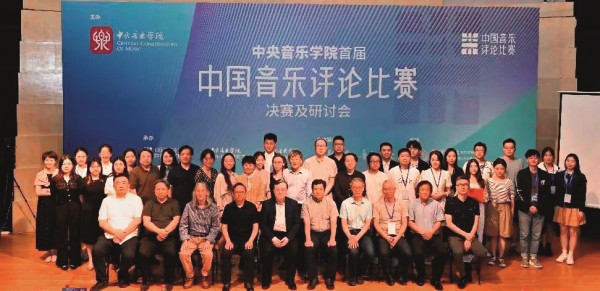
Thematic Planning•Theory and Practice of Constructing China's Independent Discourse of Literature and Art Criticism (I)
■ Meta-theoretical Reflections on the Construction of China’s Independent Discursive Knowledge System of Literature and Art Criticism (PP. 4–17)Tan Haozhe
Abstract: In the current era that is making prominent road confidence, theoretical confidence, institutional confidence, and cultural confidence, and accelerating the construction of philosophical and social sciences with Chinese characteristics, the construction of China's independent discursive knowledge system of literature and art criticism has become a major task in front of the circles of literary and art theory and criticism. This is a grand systematic project with different theoretical orientations, demanding the deployment of concrete theoretical thinking to face the actual literary phenomena and works in the practical dimension, and further demanding that of abstract critical thinking in terms of the "meta-theoretical" issues of literature and art criticism in the critical dimension. As far as the latter dimension is concerned, it is necessary to provide solutions to a number of relevant, basic theoretical issues varied in sizes and priorities, among which the followings are of the most importance: philosophical foundation, the path of construction, the concept of literature and art, the concept of identification, and the criterion of criticism. The construction of China's independent discursive knowledge system of literature and art criticism should be based on the worldview and methodology of Marxist philosophy, and its specific constructive path is to take the road of "two combinations" in the process of promoting the Sinicization and modernization of Marxism, while the concepts of literature and art, the concept of identification and the criterion of criticism are indispensable content components, which are not only the core or main content for constructing the discursive knowledge system of literature and art criticism, but also the theoretical premise and foundation for the production of the discourse of literary and art criticism in the practical dimension.
Keywords: discourse of literary and art criticism, knowledge system, China's independence, philosophical foundation, path of construction, content compositions
■ From Ancient Literature Criticism to Modern Theory of Literature and Art (PP. 18–36)Yuan Jixi
Abstract: Ancient literature criticism is an inherent form of literary criticism in China, derived from ancient academic classification and bibliography study. It has a rich way of expression, combining value and thought, knowledge system, literature and art criticism. Meanwhile, it focuses on the intuitive metaphor of appreciation and criticism, with metaphysical speculation and daily entertainment, through comments, Pindi, selections, and other methods. The relationship between ancient and modern literature criticism is harmonious but not uniform. The former shows characteristics of ethnic aesthetic ways which still have a strong vitality nowadays, converging towards the modern theory of literature and art. Ancient literature criticism will be integrated into the system of modern literary criticism, becoming a joint achievement of human civilization through in-depth research.
Keywords: ancient literature criticism, values, ways of Pindi, Chinese and Western culture fusion
■ Finding the Path of Construction in the Spiritual Convergence:"The Second Combination" and Construction of China's Independent Discursive System of Literary and Art Criticism (PP.37–45)Wang Desheng and Li Lei
Abstract: The construction of China's independent discursive system of literary and art criticism requires the adherence to the "Two Combinations", especially the deep combination of classical Marxist literary thought and traditional Chinese literary critical discourse. The high degree of compatibility and integration between the two is not mainly due to the similarity or identity of concepts, categories and propositions, but to the fact that they both take the pursuit of the value of truth, goodness and beauty as the basic starting point of literary criticism, not only sharing common theoretical problem domains or topics of concern, but also having internal consistency or spiritual interconnection in the conceptual propositions on the core issues of the nature and function of literature and art, the standards and principles of literary criticism, and the shaping of character images.
Keywords: China's independent discursive system of literary and art criticism, "The Second Combination", classical Marxist literary thought, traditional Chinese literary critical discourse
■ The Problem Orientation and Methodological Innovation in the Independent Construction of Chinese Literary and Art Critical Discourse (PP. 46–54)Duan Jifang
Abstract: The construction of China's independent knowledge system is an important task and goal of current research in philosophy and social sciences, in which Chinese literary and art criticism should play an important role. Chinese literary and art criticism has its own disciplinary system, academic system and discursive system, and therefore the independent construction of discourse is its important way of presentation. The independent construction of the discourse of Chinese literary and art criticism is not only a matter of discourse itself, but should also be deeply rooted in the process of its problem orientation and methodological innovation. From a disciplinary point of view, China's literary and art criticism has its unique ideological resources and cultural attributes, and this aspect is the identification of its "Chinese" attributes. From an academic point of view, the independent construction of the discourse of Chinese literary and art criticism cannot be satisfied only with the level of commenting, evaluating, appreciating and discussing in the general sense. The reason why "construction" lays emphasis on "constructiveness" is that it needs to show the height of theoretical grasp, the thickness of ideological expression, and the depth of contemporary observation for contemporary literary and art issues, and ultimately serving the construction of China's independent knowledge system.
Keywords: Chinese literary and art criticism, discursive construction, independent knowledge system, methodological innovation
Dialogue in the Art World
■ The Challenges and Prospects of Constructing an Indigenous Knowledge System for Chinese Cinema:A Discussion on the Chinese Cinema Knowledge System (CCKS) Platform and Its Extensions (PP. 55–65)Li Daoxin, Hou Guangming, Rao Shuguang, Ding Yaping, Wu Guanping, Chen Gang, Li Zhen and Zhao Lifang
Theoretical Explorations
■ Philosophical Reflections on Comparative Art (PP. 66–75)Lan Fan
Abstract: Comparison is the root of the development of human art, and the theoretical study and criticism of art can only be established and mature in the thinking of mutual comparison. Comparison is all that exists for the human senses, and the essence of comparison is thereby the nature of the human senses. The three basic principles of art comparison are the principle of identity, the principle of difference and the principle of isochrony. The goal of artistic comparison is to jump out of the "instinctive" comparison and "supernatural" comparison - the comparison in the sense of sensibility in the first dimension and the comparison in the sense of rationality in the second dimension. To reach the comparison in the kingdom of freedom in the third dimension, it should rely on the progress of human civilization, break through the limitations of the two dimensions of sensibility and rationality, and develop a system of art knowledge that is entirely generated by human thinking, so as to reach the "meta" goal of the comparison of art. That is to say, the significance of comparison is to realize the "diversity" of art, so as to promote the continuous innovation and creativity of human art. In this way, the comparison of art is the comparative understanding of this spiritual world by human beings using their own consciousness, which means the comparison of comparisons.
Keywords: philosophical thinking, three principles of comparison, three dimensions of comparison, the targeting meaning of comparison
■ "Our Hearts Resonate, though Our Words Differ":Re-analyzing Wang Guowei's Concepts of "Renjian" and "Jingjie" (PP. 76–89)Han Zhenhua
Abstract: The exploration of the relationship between Wang Guowei's concepts of poetry and Western thought necessitates a meticulous comparison of the relevant ideas, theories, and viewpoints found in both traditions, while also transcending textual details to achieve a comprehensive understanding from broader perspectives in terms of the academic purpose and intellectual adaptation. The term "Renjian" in the title of Wang Guowei's Renjian Ci primarily reflects a lamentation observed through the "heavenly eye"(tian yan) encapsulating a wealth of philosophical and literary insights from Wang Guowei at that time, as well as mirroring his life experiences following numerous personal upheavals. The progression from Renjian Ci to Renjian Cihua, transitioning from the vibrant state in literary creation to the appreciation of poetry with a high emotional tone, illustrates a journey from life experience to self-transcendence, culminating in a deep understanding of life's principles. This trajectory reveals a strong inclination toward seeking inner validation and spiritual transformation. The concept of "Jingjie" advocated in Renjian Cihua embodies both Chinese and Western elements, suggesting a mutual interplay between the two; yet, it can also be described as neither fully Chinese nor fully Western. The former illustrates the characteristic of Wang Guowei's thought being a pluralistic synthesis, while the latter emphasizes his grand academic ambition in creating magnificent verses.
Keywords: Wang Guowei, Renjian, Jingjie, Arthur Schopenhauer
Random Thoughts on Art
■ The Pictures of Great History, the Epic of the New Era: The Value Orientation of Contemporary Chinese Art Viewed from the "Five Stars Rising in the East: the 'Belt and Road' International Art Exhibition Forum" (PP. 90–105)Zhang Xiaoling
Abstract: In recent years, a series of art exhibitions with great social impact have been held successively, such as "Five Stars Rising in the East: the 'Belt and Road' International Art Exhibition Forum" , "A World of Coexistence: 2022 Jinan International Biennale", "Like Morn in the Day: The 17th Shanghai Youth Arts Exhibition", and "No Questions Asked 2023: Contemporary Art Academic Research Exhibition in China". These exhibitions not only indicate the prosperity of contemporary fine arts creation with diversified forms and styles, but also put forward a number of propositions with significant theoretical value. This article systematically evaluates these exhibitions, especially the "Five Stars Rising in the East: the 'Belt and Road' International Art Exhibition Forum", in terms of the themes, works and theories of the exhibitions. The author believes that the proposal of the Belt and Road Initiative provides opportunities and possibilities for cross-cultural and transnational art creations, and that its representative works confirm the truth that the "Silk Road Spirit" will benefit the whole world in the construction of the Belt and Road Initiative and become the bond of the community of shared interests for mankind. At the same time, this article also discusses in depth the academic propositions put forward by each exhibition, such as the historical attributes and contemporary significance of "New Chinese Painting" and "New Ink Painting", the establishment of the "Chinese School of Oil Painting", the exploration of the contemporary nature of printmaking and sculpture, and the relationship between science and technology and art. The article concludes by pointing out the significance of each exhibition to the major theoretical issue of "the construction of cultural subjectivity". Through the discussion of these issues, we can clearly see the value of contemporary Chinese fine arts.
Keywords:the "Belt and Road" International Fine Art Project, epic of the New Era, the construction of cultural subjectivity
■ Fusion and Innovation of Plastic Arts in Cross-Media Communication:Starting from the Large-scale Documentary Fine Arts in China(PP. 106–114)Kong Dechen
Abstract:In recent years, China Central Radio and Television has launched a series of fine arts TV programs that pay tribute to classics, such as Fine Arts in China and Poetry and Painting of China, etc., using digital audio-visual media to reproduce classical works of art. These programs not only form a cross-media fusion and innovative art form, but also transcend the inherent boundaries of plastic arts, establishing multi-dimensional text narratives, and transforming plastic art from elite art to popular art. This cross-media communication and fusion innovation can further explore the hidden spiritual implications of the original work, expand the communication power and aesthetic appeal of fine arts works, and cultivate and enhance the audience's artistic appreciation ability. The cross-media communication and fusion innovation of plastic arts in the digital age bring new inspiration to the development of literature and art. What is to be explored is how to effectively apply new technologies and media to promote this innovation as well as curb any possible negative impact.
Keywords:plastic arts, cross-media communication, fusion and innovation, Fine Arts in China
Interview with Renowned Experts
Reverence for Art, Dancing with the "Orient": An Interview with the Dancer Xing Dehui (PP. 115–124)Interviewed by Tang Kun

Inside Front Cover
Chinese Literary Critics: Jin Yongbing


Inside Back Cover
Review of the Second Batch of bases of Chinese Literary and Art Criticism:The base of China Literary and Art Criticism (Central Conservatory of Music)


Back Cover
New Book Recommendation: The Sound of Woodpecking: The 8th"Woodpecker Cup" Outstanding Anthology of Chinese Literature and Art Criticism



中国文艺评论网

“中国文艺评论”微信公号

“中国文艺评论”视频号